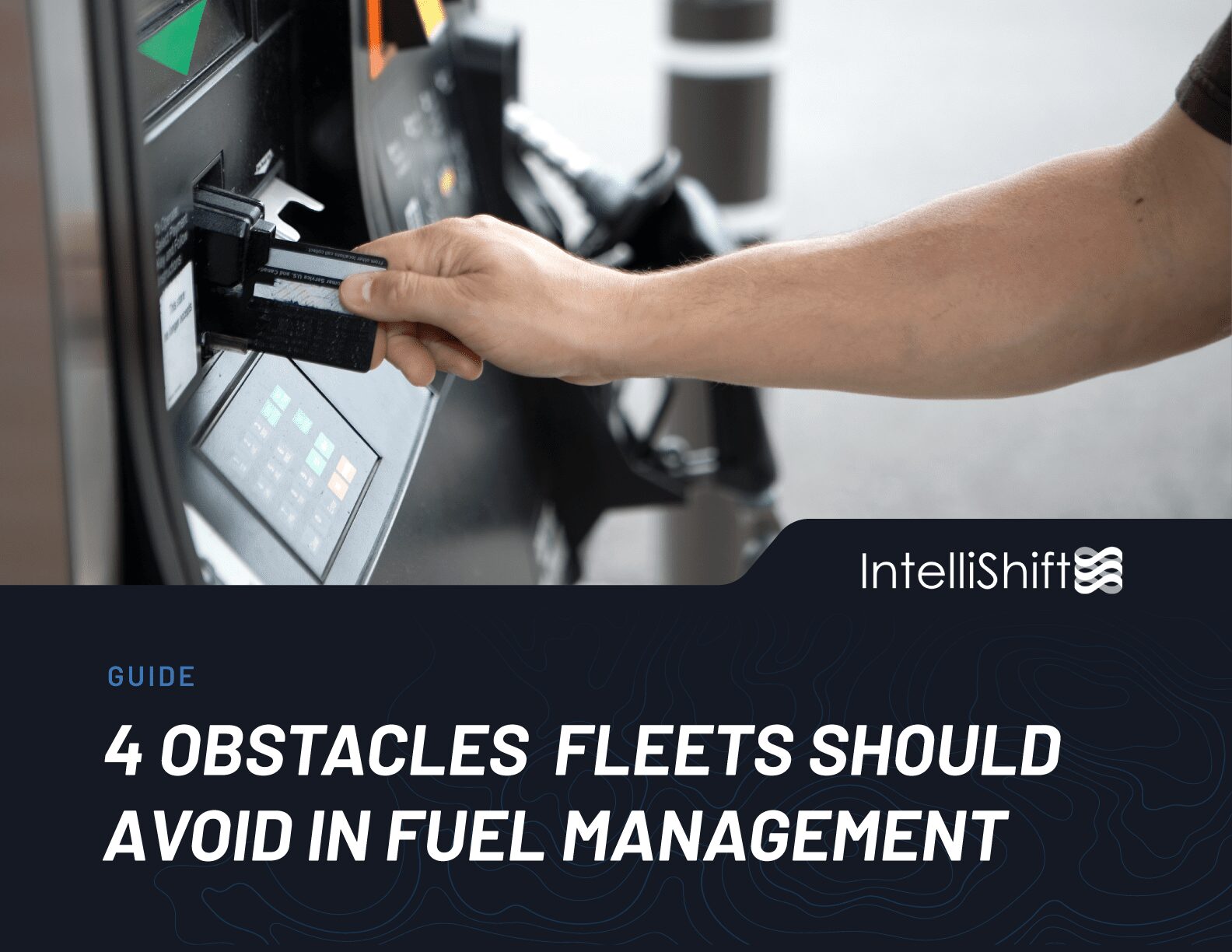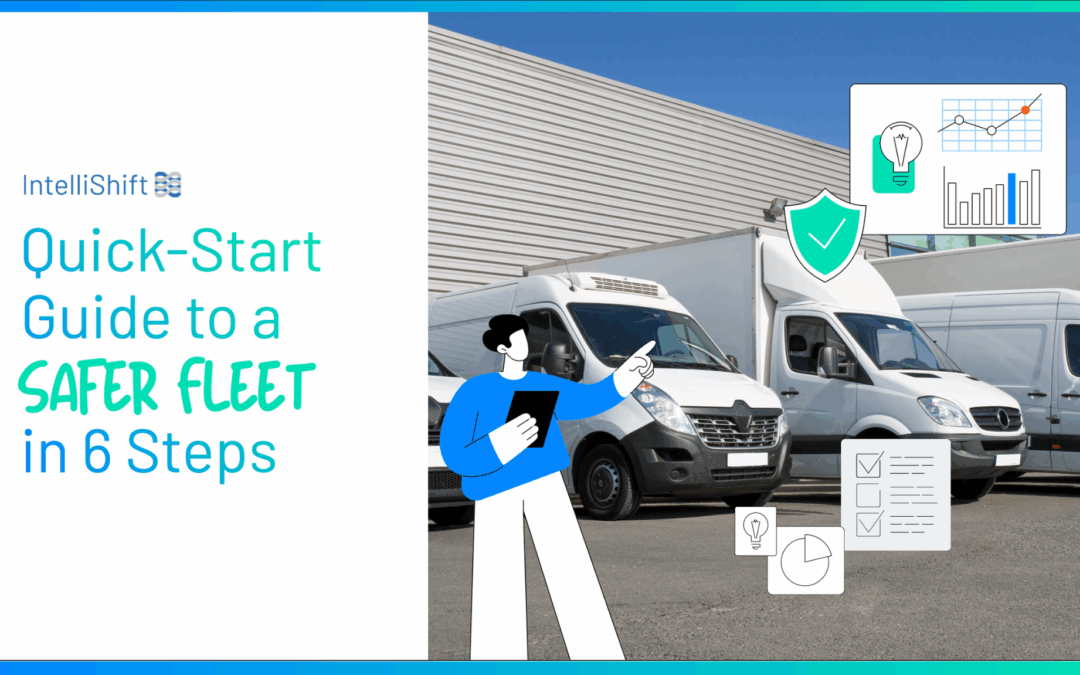If you’re still blaming high fuel costs on market prices, we need to talk.
While fuel prices play a role, they’re not the real problem. The real problem is what’s happening under your nose—inside your own operation. Unchecked idling. Fuel card abuse. Weekend equipment runs that “nobody authorized.” It’s not theoretical; it happens. And it’s draining your bottom line, one gallon at a time.
Most fleet managers chalk up fuel overages to price hikes or job volume. That’s the safe assumption. But it’s often dead wrong. The truth is, if you’re not actively managing your fuel program with the right controls, you’re leaving the door wide open for waste, and sometimes outright fraud.
This isn’t hype. It’s what’s actually happening in fleets just like yours. Let’s dig into where your fuel budget is actually going and why disconnected systems are letting bad behavior run wild.
You’re Losing Fuel in All the Wrong Places
Let’s be blunt: the waste isn’t always obvious, but it is constant. Fuel doesn’t disappear because of a line item on your invoice. It disappears because of habits, gaps in oversight, and systems that weren’t built to talk to each other.
When you don’t have one unified platform to track behavior, fuel use, and asset activity, things slip through the cracks. And those cracks add up fast.
Here are a few of the usual suspects:
Fuel Card Misuse
It starts with a quick top-off in a personal vehicle. Or filling a “spare” gas can on the side. Most of it isn’t malicious—but all of it adds up. Without transaction-level visibility tied to a specific asset and driver, there’s no way to know if the purchase was legitimate or not.
Unchecked Idling
When drivers are stuck in traffic or killing time between jobs, letting the engine run feels harmless. But when half your fleet is idling an hour a day, you’re losing thousands in fuel costs monthly. Multiply that by summer months when A/C is cranked and idle time surges? You’re leaking fuel money daily.
Off-Hours Equipment Use
If your trucks or heavy equipment are showing fuel activity after hours or on weekends, you’ve got a red flag. Whether it’s side gigs, unauthorized site visits, or a driver “borrowing” the vehicle, every unapproved mile means fuel (and liability) on your dime.
And here’s the kicker—most of these issues don’t show up until you look at the big picture, which you can’t do if your fuel data lives in one system, asset location in another, and driver behavior in a third.
If your platforms aren’t connected, your fuel strategy isn’t either.
BS Waste #1: Fuel Fraud is Easier Than You Think
We don’t like to say the “F” word in fleet. But fuel fraud is real—and it is way more common than you think.
Not every driver is out to scam you. However, the opportunity for fraud is everywhere when there are no controls in place. And in today’s economy, even good employees can be tempted to make a few “harmless” exceptions.
What Fuel Fraud *Really* Looks Like
- Filling up a buddy’s car during a shared stop
- Swiping a fleet card for a personal errand, “just this once”
- Using company fuel to top off a personal generator, mower, or ATV
- Filling portable containers for non-fleet use—without a trace
Unless you’re tying every transaction to a specific driver, vehicle, location, and time of day, it’s nearly impossible to catch. And once it becomes routine? You’re not just losing fuel—you’re losing trust.
Most legacy systems and standard fuel cards don’t catch it. They log the spend, but they don’t connect the dots. Was the asset even near the fuel station at the time of purchase? Was that asset in use? Was the amount consistent with past activity?
Without fuel card controls and platform-level verification, you’re gambling. And fraud always wins that bet.
The IntelliShift Fuel Card Powered by Coast helps you shut down fraud before it starts. Every transaction is tied to your IntelliShift platform, so you can see who fueled what, where, and when—in real time. Set custom limits, block specific merchants, and get instant alerts when something doesn’t add up. Bonus: you’re backed by up to $25,000 in fraud protection. Try getting that from your old fuel card.
>> Learn MoreBS Waste #2: Idle Time Isn’t Just “Break Time”
If you think of idling as downtime, think again; it is direct fuel burn for zero output. And it’s happening more than you think.
Every hour a vehicle idles, you’re burning roughly 0.8 gallons of fuel. Multiply that by 20, 50, or 200 vehicles across your fleet, and suddenly, you’re losing thousands of dollars every single week just to… sit still.
And no, this isn’t about demonizing drivers. In most cases, they’re just doing what feels natural: keeping the cab cool on a hot day, warming up the engine in the morning, or waiting in traffic. The problem isn’t intent, it’s lack of awareness and, in many cases, lack of policy.
Why Idle Time Adds Up
Here’s where summer makes it worse: high temps mean longer idle sessions with the A/C cranked too high. If your drivers are working in extreme heat, you want them to stay safe and comfortable. However, that doesn’t mean handing out a blank check on fuel usage.
What works instead? Clear, realistic idle policies, telematics-backed alerts, and real-time visibility so you can separate legitimate downtime from wasteful burn.
Idle time isn’t break time. It’s a budget line item and one you can absolutely control with the right tools.
BS Waste #3: Asset Usage That No One’s Watching
You’d be surprised how many fleets are burning fuel on equipment and vehicles they didn’t even realize were in use.
Unauthorized Use Adds Up Fast
- A backhoe that was “borrowed” over the weekend
- A pickup truck that’s making side deliveries after hours
- A service van running errands for someone’s side hustle
- Or worse, an asset that’s been missing for a week and no one noticed
But every unsanctioned move means fuel burned, wear and tear on the asset, and potential liability if something goes wrong. If you don’t know where your assets are, when they’re in use, or who’s using them, you’re operating blind.
And that’s why having one platform that connects fuel data, driver behavior, and asset tracking isn’t just helpful—it’s essential. Because when you know why fuel is disappearing, you can stop it before you’re chasing ghost equipment and a drained card with zero answers.
Get a Handle on the Drain
You can’t plug the leak if you don’t know where the fuel’s going. And right now, too many fleets are trying to fix a cost problem with guesswork, half-baked reports, and a monthly fuel bill that doesn’t explain a thing.
Here’s the truth:
Fuel fraud. Idle time. Unauthorized use. They don’t show up in isolation—and they definitely don’t show up in spreadsheets. You need a system that shows you the full picture: who fueled what, when, where, how much, and whether it aligned with actual vehicle and driver behavior.
This is where connected platforms separate the pros from the patchwork operations.
Smart Controls, Real Visibility: Tools You Need
Even better? When all of those tools live in one place—not spread across four platforms and five logins.
It’s about being proactive. Because once you see what’s really happening in your fleet, you’ll never go back to “we think our fuel costs are fine.”
Stop the Drain Before Summer Burns Your Budget
Fuel fraud and idle waste aren’t just annoying—they’re completely preventable. But you have to look beyond the pump price and into the patterns behind it.
If you’re serious about cutting costs, improving efficiency, and getting ahead of summer spikes, it’s time to stop relying on disconnected data and gut instinct. IntelliShift gives you the control, the visibility, and the confidence to take back your fuel budget—before it’s bled dry.
Ready to stop the drain and put money back in your budget?
Download your free Fuel Optimization Checklist for a step-by-step guide to auditing your program, spotting vulnerabilities, and setting up controls that pay for themselves.



![Episode 50 Thumbnail Erin celebrates building the fleet community with 50 episodes and 11K followers on LinkedIn [Podcast]](https://intellishift.com/wp-content/uploads/2025/06/gfx-blog_fuel-budget-waste.png)




